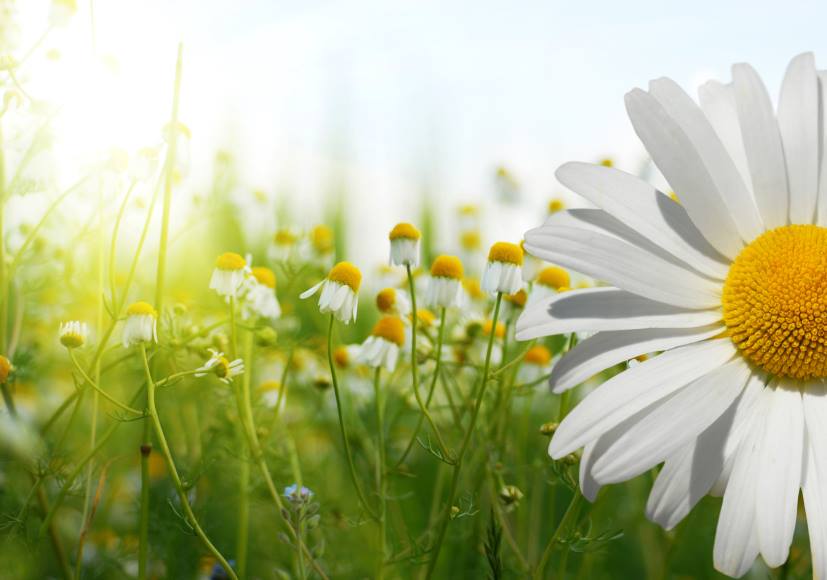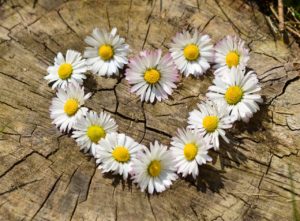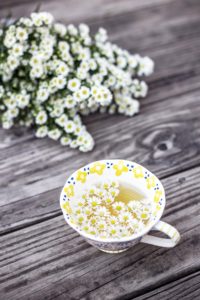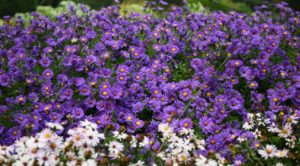
Delightful Daisy Facts – Symbolism, Food, Health and Gardening
Everybody loves daisies, they are one of the most pretty and recognizable flowers that ever bloomed. Giving birth to poetry, songs, and a once popular girls name, the daisy has an enduring quality that brings feelings of goodness and purity. Maybe it’s the white color or the pretty petals. Let’s look at a few daisy facts you might not know.
The Daisy follows soft the Sun
And when his golden walk is done
Sits shyly at his feet
– Emily Dickinson
What does a daisy symbolize?

The daisy got its name from old English and was once called the “daes eage” which translates to the day’s eye. The cute little flower closes its petals around its bright yellow center at night and opens back up with the sunrise, the start of a new day. The lovely yellow center is the sun and the white petals represent purity and innocence.
In the middle ages, children would make daisy chains to wear during May Day celebrations. While native to Northern and Central Europe, daisies can now be found on every continent except Antarctica.
What do daisies look like?
Another surprising daisy fact is that the daisy is actually two flowers in one. The yellow center, the cluster of tiny yellow disc petals, is technically one bloom, and the surrounding white petals are another independent bloom. They are part of the largest group of flowering plants called Asters, and this family of plants constitutes around 10% of all flowering plants growing on the earth today. Most daisies have white petals and a yellow disc center, but there are also other colors to look for as well.

Daisies bloom from early to midsummer, but when grown under ideal conditions, the flowering season could stretch into mild winters.
Unfortunately, if you don’t control your daisy population, they can become weeds. This is due to the fact that daisies are highly prolific and can thrive in almost any location and in almost any condition. There is a huge problem of English daisies as weed infestations in the American Northwest. Just be careful and give your daisies adequate care and pruning to control the spread of the flowers beyond where you want or need them.
What can you do with daisies?
Daisies are edible
Fresh daisy leaves, flowers, buds, and petals are edible and can make a healthy and tasty addition to salads or added to soups. Use only young plants, since the older flowers can be quite astringent. The flower heads can also be used in vinegar as a substitute for capers.
Health Benefits of daisies

Daisies have also been proven to have multiple health benefits. They’re used for loss of appetite, digestive problems, painful menstruation and other inflammations. A tincture made from the herb may be used as a natural treatment for atopic dermatitis, gout, and chronic rheumatic conditions and can also be topically used on small wounds and scratches.
In tea form, it is used as a herbal remedy for headaches, the common cold, bronchitis and other respiratory ailments.
An herbal tea can be made by pouring one cup of boiling water over two teaspoons of dried flower heads and steep for 10 minutes, strain before use. The recommended dose is 3 small cups daily. There are no known side effects to the use of the herbal concoction.
Daisy petals are related to the artichoke, and they are also high in Vitamin C which helps boost our immune system. So eat up and enjoy your daisies!
Landscaping with daisies
Daisies are wonderful flowers for creating colorful flower beds and they fit into any garden design. The different varieties have different types of flowers and properties.

- Shasta Daisy – a cultivated hybrid variety that looks like the generally known daisy. They’re one of the few daisies grown on purpose. Shasta daisies are one of the largest varieties and are great for cutting flowers. Unlike other daisy varieties, they won’t take over your yard as a weed. They like the sun and need well-draining soil.
- Gerbera Daisy – a perennial that originates from South Africa, but is treated as an annual in colder climates. They are available in many different shapes and colors (white, pink, salmon, purple, violet, orange, etc.).
- Marguerite Daisy – a small shrub-like perennial, which is native to the Canary Islands and often confused with the Shasta daisy. They also come in yellow, pink and purple.
- Painted Daisy – a perennial that is a good tool to keep many harmful bugs and animals out of the garden. The petals contain the natural repellent pyrethrum and can be planted strategically around other plants to protect them.
- English Daisy – is the common daisy or bellis perennis that can add a stylish old-fashioned touch of color in the garden. They grow best in full sun in well-draining soil.
For more information about creating a perennial garden with daisies, watch the following video.